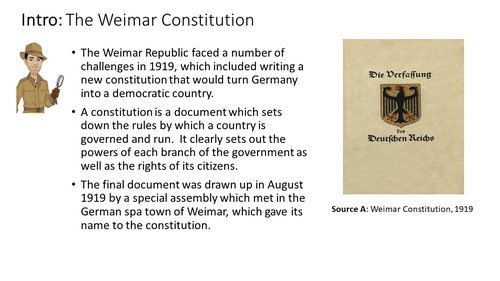The Weimar Constitution, also known as the Constitution of the German Reich, was the democratic constitution of Germany that was in place from 1919 to 1933. It was adopted after the fall of the German Empire at the end of World War I, and was designed to replace the previous authoritarian government with a more liberal and democratic system. Despite its noble goals, the Weimar Constitution had several weaknesses that ultimately contributed to its failure and the rise of the Nazi Party in Germany.
One of the main weaknesses of the Weimar Constitution was its system of government. The constitution created a parliamentary democracy, in which the chancellor, who was the head of government, was appointed by the president and responsible to the parliament. However, this system was highly unstable and prone to deadlock, as the parliament was often deeply divided and there were many parties with different ideologies and agendas. This made it difficult for the government to effectively govern and pass legislation, and contributed to a sense of political instability and uncertainty.
Another weakness of the Weimar Constitution was its reliance on the presidency as a source of political stability. The constitution gave the president broad powers, including the ability to appoint and dismiss the chancellor, dissolve the parliament, and declare a state of emergency. However, these powers were often used in a partisan and divisive manner, which further destabilized the political system and eroded public trust in the government.
The Weimar Constitution also had a number of economic weaknesses that contributed to its downfall. The economic conditions in Germany after World War I were difficult, with high levels of inflation, unemployment, and debt. The Weimar government was unable to effectively address these problems, and the constitution did not provide the necessary tools or framework to deal with the crisis. As a result, the economic situation in Germany continued to deteriorate, further undermining public confidence in the government and the constitutional system.
In addition to these structural weaknesses, the Weimar Constitution faced significant challenges from external forces, including the rise of extremist parties, such as the Nazi Party, and the impact of the Great Depression. These forces further weakened the political system and contributed to the collapse of the Weimar government.
Overall, the Weimar Constitution was a well-intentioned attempt to create a democratic and liberal government in Germany after World War I. However, it was ultimately unable to overcome the many challenges and weaknesses that it faced, and contributed to the rise of authoritarianism and totalitarianism in Germany in the 1930s.









